Definition of a recession
A recession is characterised as a period of negative economic growth for two consecutive quarters. In a recession, unemployment will rise, output fall and government borrowing increase. See more on recessions
Definition of depression
A depression is a recession but much more severe and long lasting. There is no agreed upon definition of a depression. But, generally a depression would have some of the following characteristics.
- Decline in output for a prolonged period e.g. greater than 2 years.
- A drop in output of 10% or greater.
- Unemployment rate touching 20% (rather than the 10% rate associated with recessions)
One popular definition of the difference between recession and depression is:
. “A recession is when your neighbor loses his job; a depression is when you lose yours.”
It was first used in print by Teamsters Union President Dave Beck (1894-1993) It is widely attributed to Henry Trueman who began using it shortly after in 1954.
Example of recession 2009
In 2008/09, the US experienced a rapid drop in real GDP – with negative economic growth of 4% in 2009. However, the recession in the US was relatively short lived and so is not classed as a depression. Unemployment rose to 10%, but started to fall relatively quickly.
1930s Great Depression
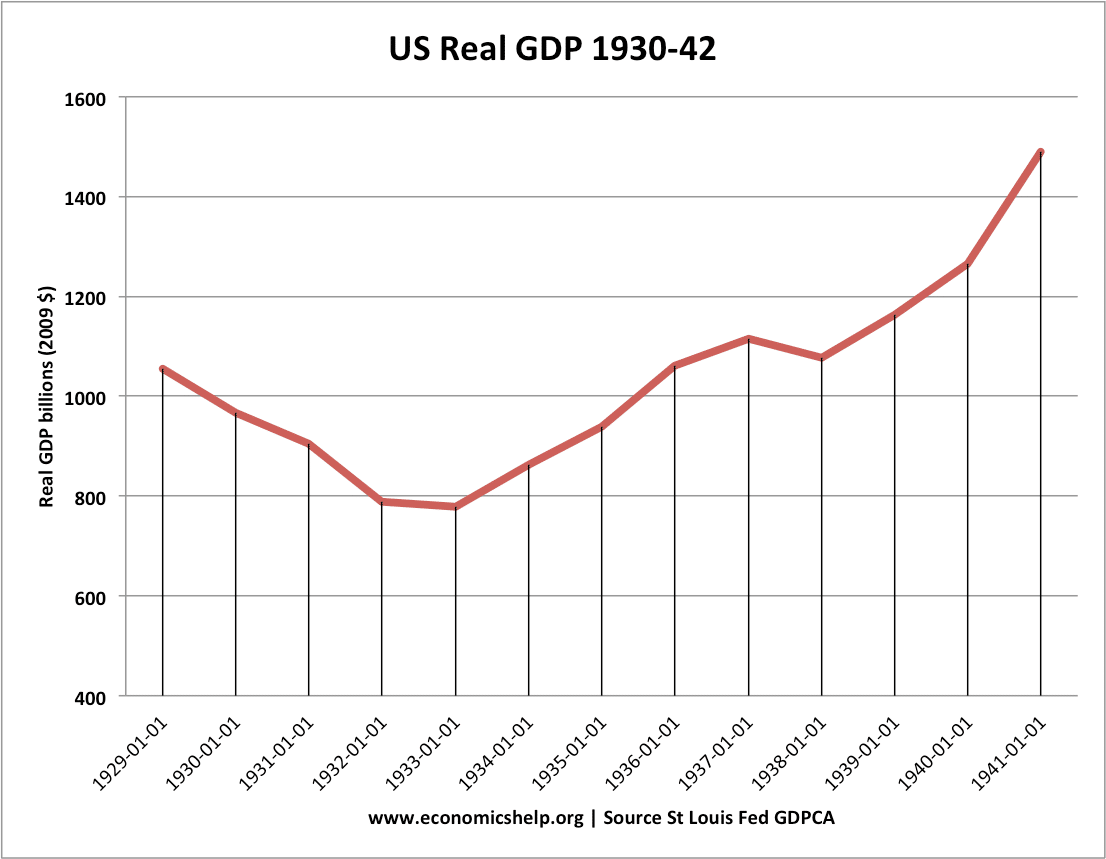
The 1930s was considered a depression. Real GDP began falling in 1929 and it took until 1936, for the economy to recover to its pre-crisis level of national output.
For four consecutive years, the US experienced a dramatic drop in real GDP.
The scale of the great depression is reflected in the US unemployment statistics, unemployment rose from 0% to 25% and stayed in double figures until the start of the 1940s.
See also: Definition of Depression

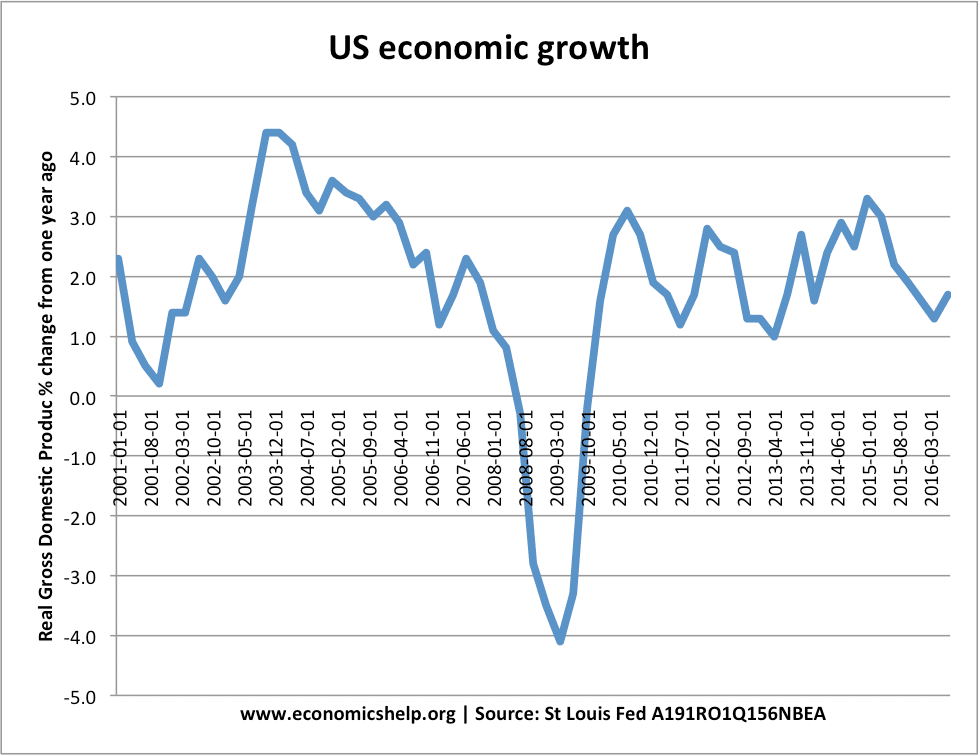
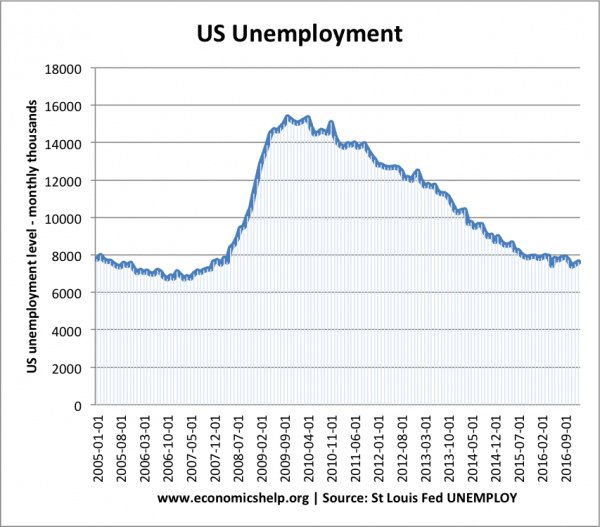
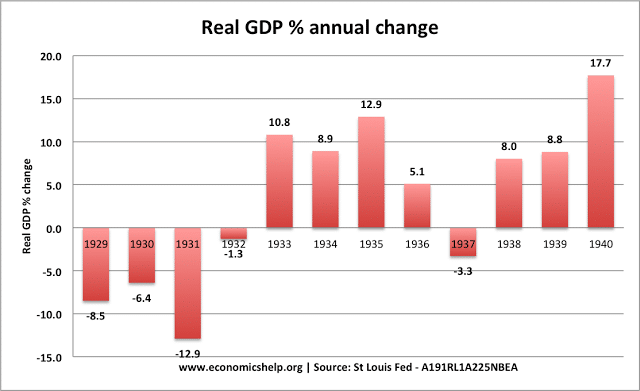
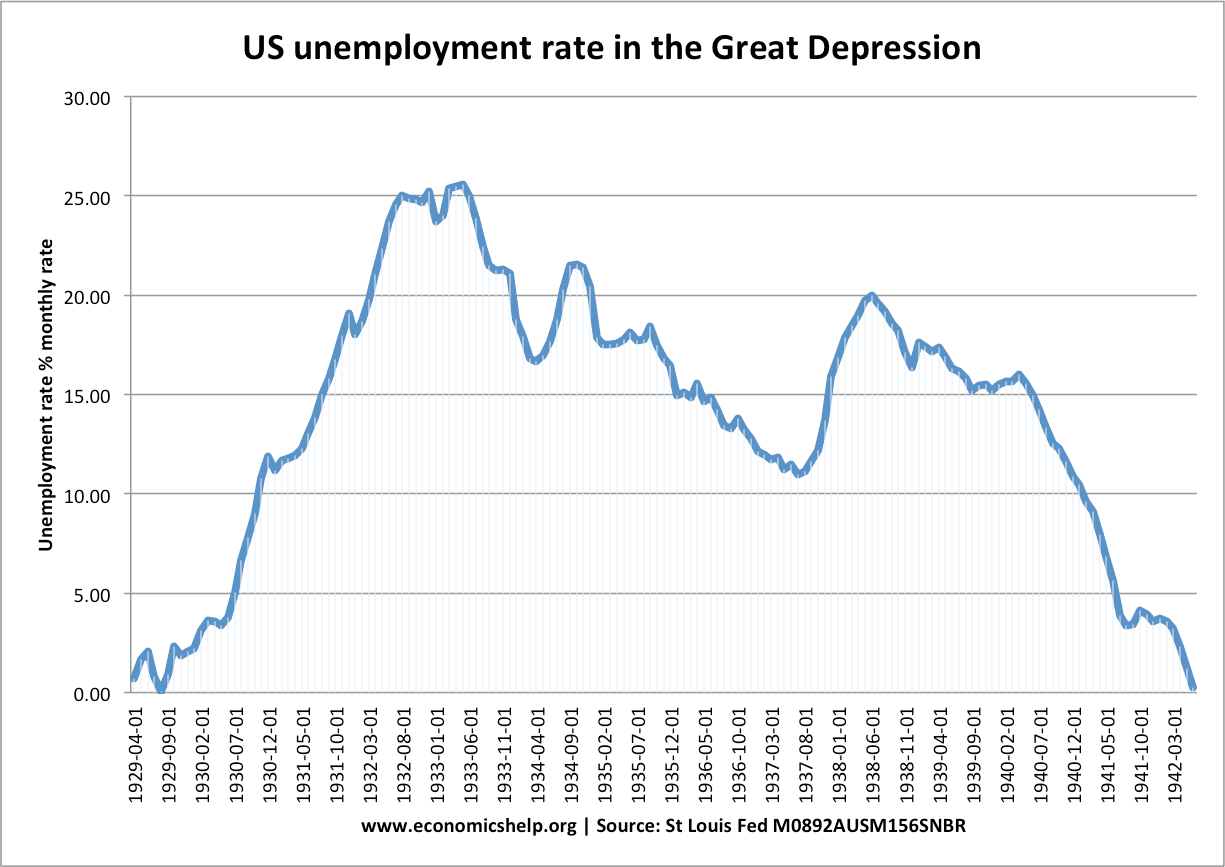
Good to understand as Layman !